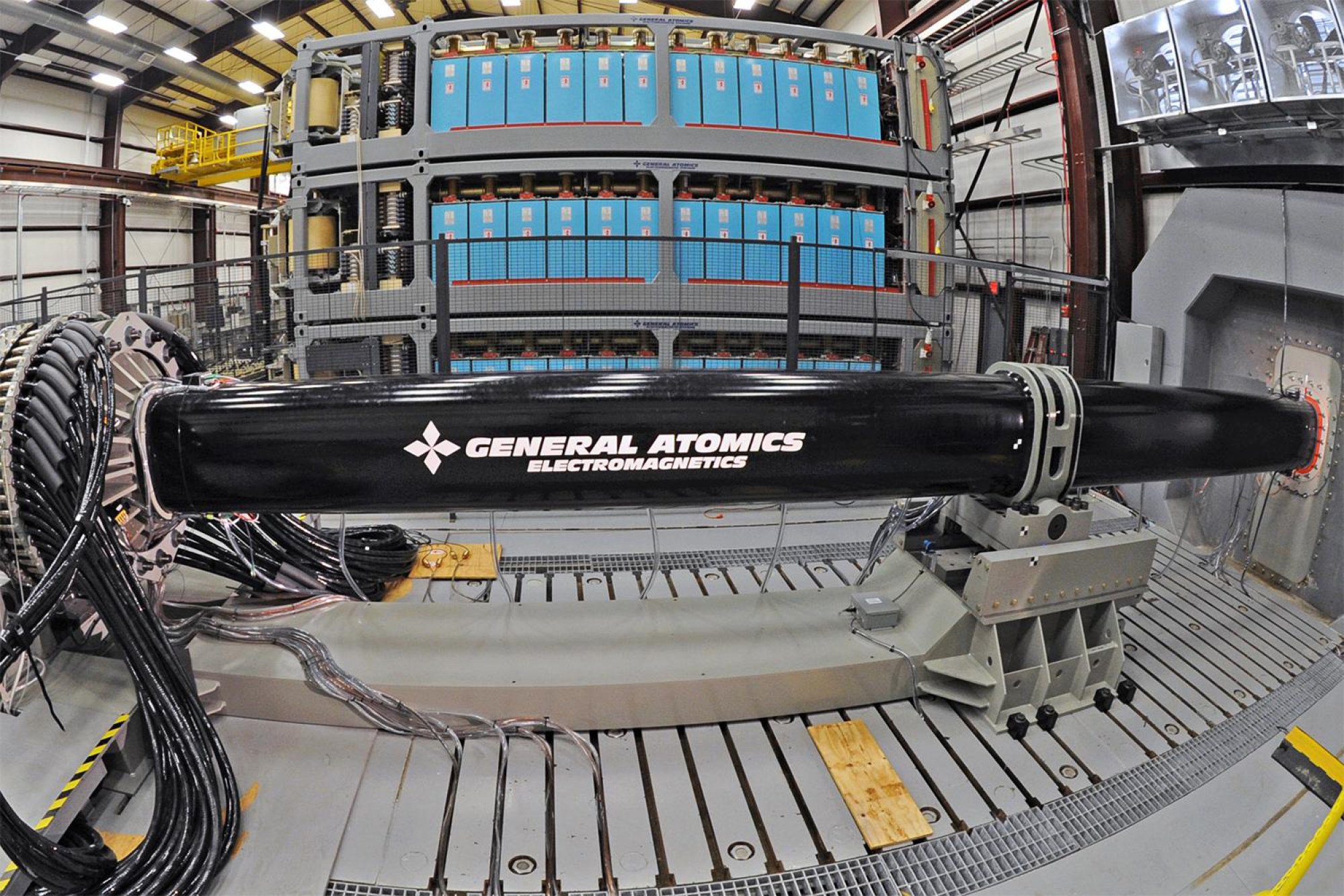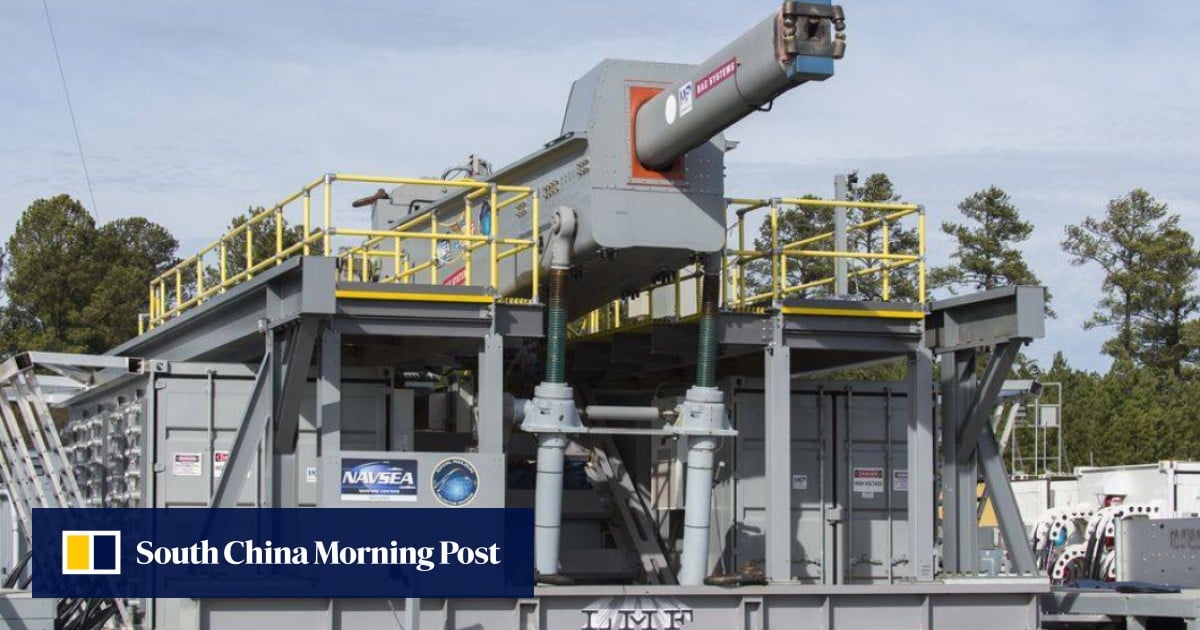
2 years after US killed the rail gun, China brings weapon back to life with major technological leap
- Military engineers have managed to create an electromagnetic rail gun that does not suffer damage after continuous firing
- The breakthrough Chinese weapon has surpassed the US, which cancelled its costly rail gun development in 2021
The shells shoot out of the barrel at 2km (1.24 miles) per second, which means any target within 100-200km is within its sights.
In comparison, regular artillery shells usually max out at tens of kilometres.
After the lightning and thunder subsided, the entire system remained intact, according to the researchers.
“Similar work has never been publicly reported before,” stated the team with the National Key Laboratory of Electromagnetic Energy at the Naval University of Engineering in a paper published on November 10.
“War machines are slowly shifting from chemical power to electromagnetic power … [and] continuous firing rate is a crucial indicator of combat effectiveness for electromagnetic rail launch systems,” the scientists and engineers led by Professor Lu Junyong wrote in the paper.

This breakthrough means that “electromagnetic rail launch systems can now fire reliably, swiftly and without interruption,” they added.
It puts China ahead of the pack, globally.
The number of rounds that can be fired at Mach 6 before something gives, has to be considered by every scientist and engineer looking at rail guns.
One of the main sticking points the US had with rail guns was that they could not crack the code on building something that could fire repeatedly without breaking down.
Meanwhile the success of the Chinese team can be largely attributed to a sophisticated measurement and diagnostic system.
The system is capable of collecting and analysing data from more than 100,000 component points simultaneously. That is nearly 10 times the number of sensors on a modern aircraft.

It has to find problems quickly, too, and figure out what is causing them. That is tough, because a lot can go wrong with a machine that is complex and works in extreme conditions. Even the best technicians need days to sort it out sometimes.
And it can make decisions on its own. If something is not too serious, like a piece of equipment getting a little too hot, it will keep going. But if there is trouble that could cause real damage, like something wrong with the thrust, it will not fire even if everything is loaded up.
Lu’s team said this clever system had saved the pricey weapon three times already. And with every little problem found and fixed, the electromagnetic gun works smoother. In the last 50 shots, there had not been a single glitch.
Electromagnetic rail guns and the tech that comes with them are a big deal for the Chinese military. They hope the weapons could be used to shake up American control of the seas.
Some Chinese military experts trust that these rail guns could fire beyond 200km, letting their navy throw a lot of punches far from home.
It was the Americans who first dreamed up a maritime version of Star Wars. Back in 2011, they had spent four years shooting off 1,000 test shells. By 2018, they were aiming high – building something that could fire 1,000 rounds without breaking a sweat.
But it did not pan out. Engineering, tech and money – they all got in the way. The US military gave up on it in 2021, and some critics warned that China could use this as an opportunity to catch up and maybe even surpass them.
The Chinese researchers working on electromagnetic weapons are thinking big. They figure they could use this tech to zip a train through a vacuum tube at 1,000km/h – faster than any plane flying today.
And by lifting up the end of that tube, they could launch rockets and maybe even make space travel cheaper. In November, China built the world’s longest vacuum electromagnetic launch tube in Shanxi province, and many research teams from around the nation are keen to test it.


